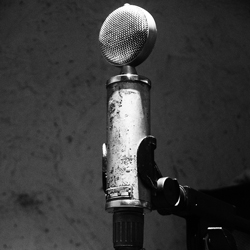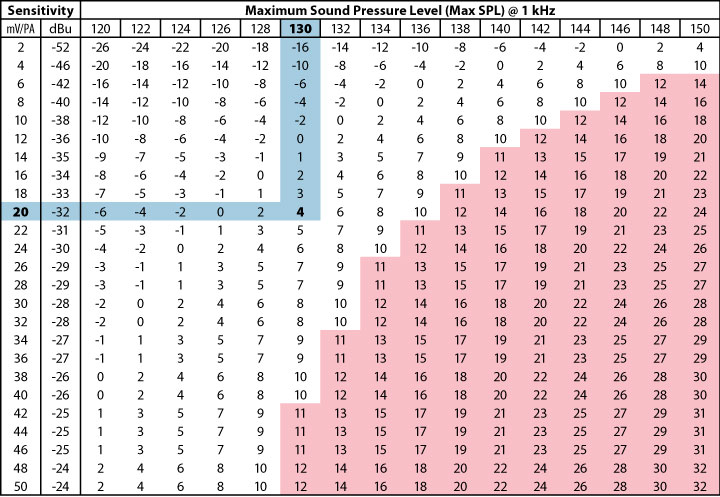
Preamp Input Overload
Determining input headroom compatibility requires knowing the microphone sensitivity rating and the maximum SPL allowed.
The sensitivity rating is usually the easiest and least ambiguous number to find on the data sheet, rated at 1 kHz and expressed in millivolts per pascal (mV/Pa).
One pascal is the amount of pressure resulting from a loudness level of 94 dB (written as 94 dB SPL).
For example, a sensitivity rating of 20 mV/Pa tells you that when a sound equal to 94 dB SPL strikes the microphone element, it results in an output voltage of 20 millivolts.
The sensitivity rating gives you a voltage level at one reference point; now all you need is the mic’s maximum SPL and you can calculate the maximum output voltage.
Then you use this to compare against the maximum input voltage rating of the microphone preamp.
The maximum allowed sound pressure level is stated in several ways: Maximum SPL (often with a stated THD level), Max Acoustic Input, Sound Pressure Level for X% THD, all are variations for the same rating.
With these two specifications it is a simple matter to calculate the maximum output level in volts and convert that into the familiar dBu units found on microphone preamp data sheets.
To make this even easier Table 1 is provided. To obtain the microphone maximum output level in dBu, find your microphone’s sensitivity rating on the left side and then move right until you are directly below your microphone’s maximum SPL rating.
As an example, for a microphone with a sensitivity rating of 20 mV/Pa and a max SPL equal to 130 dB, Table 1 tells us that the maximum output voltage is +4 dBu. You now have what you need to compare preamps regarding maximum input level.
Another example using Table 1 is to block out all possibilities that could overload a specific preamp.
For example, the red triangle area represents all those combinations that could overload Rane’s handy-dandy MS 1S Mic Stage.
The MS 1S’s maximum input level is rated at +10 dBu, therefore all microphone sensitivity and max SPL combinations resulting in greater than +10 dBu are excluded from consideration. Used this way, any new microphones can be quickly checked for overload threat.
Caveats: Remember though, that this output level only occurs under the worst-case condition of sound pressure levels equaling the maximum allowed by the microphone.
This means that if your application has sources that cannot achieve the maximum sound pressure levels, then you can relax your input overload requirement accordingly.
For instance, if you know your source is never going to exceed, let’s say, 110 dB SPL, and your microphone is rated for maximum levels of 130 dB, then you can take 20 dB off the levels shown in Table 1, and widen your preamp choices considerably.
Note also that input overloading is a strong function of the preamp’s gain control setting. Most preamp manufacturers measure the maximum input level with the gain control set at minimum.
This means there is a real danger that after carefully matching the output and input levels of a microphone and preamp, you find that the mic still overloads the preamp.
This happens when the system needs the preamp gain turned up (correspondingly reducing input headroom) and the microphone is used for a wide dynamic range source.
Unless there is a person riding gain, or some provision for automatic input ranging, overload is still going to occur. This means that not only do you have to worry about matching your mic and preamp, but also about real-world sources and gain settings.

